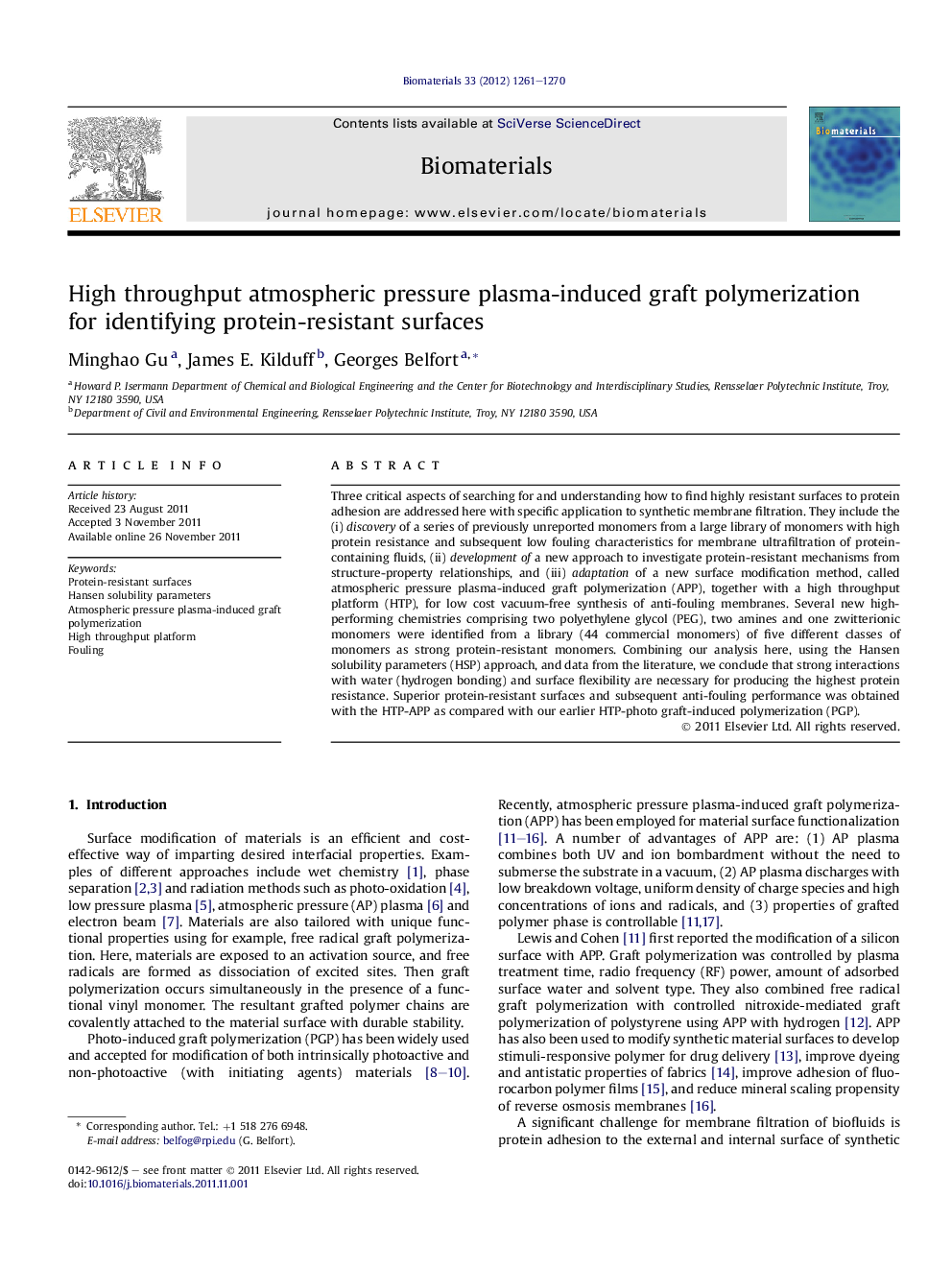| Article ID | Journal | Published Year | Pages | File Type |
|---|---|---|---|---|
| 10229791 | Biomaterials | 2012 | 10 Pages |
Abstract
Three critical aspects of searching for and understanding how to find highly resistant surfaces to protein adhesion are addressed here with specific application to synthetic membrane filtration. They include the (i) discovery of a series of previously unreported monomers from a large library of monomers with high protein resistance and subsequent low fouling characteristics for membrane ultrafiltration of protein-containing fluids, (ii) development of a new approach to investigate protein-resistant mechanisms from structure-property relationships, and (iii) adaptation of a new surface modification method, called atmospheric pressure plasma-induced graft polymerization (APP), together with a high throughput platform (HTP), for low cost vacuum-free synthesis of anti-fouling membranes. Several new high-performing chemistries comprising two polyethylene glycol (PEG), two amines and one zwitterionic monomers were identified from a library (44 commercial monomers) of five different classes of monomers as strong protein-resistant monomers. Combining our analysis here, using the Hansen solubility parameters (HSP) approach, and data from the literature, we conclude that strong interactions with water (hydrogen bonding) and surface flexibility are necessary for producing the highest protein resistance. Superior protein-resistant surfaces and subsequent anti-fouling performance was obtained with the HTP-APP as compared with our earlier HTP-photo graft-induced polymerization (PGP).
Keywords
Related Topics
Physical Sciences and Engineering
Chemical Engineering
Bioengineering
Authors
Minghao Gu, James E. Kilduff, Georges Belfort,
